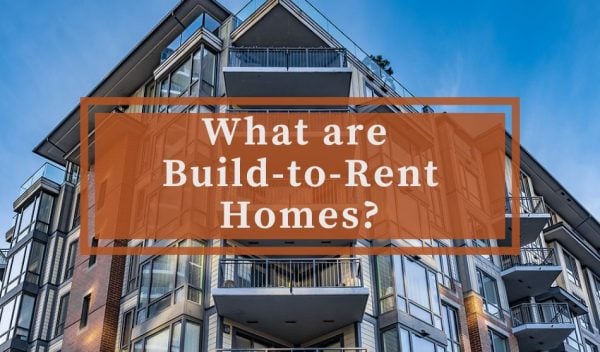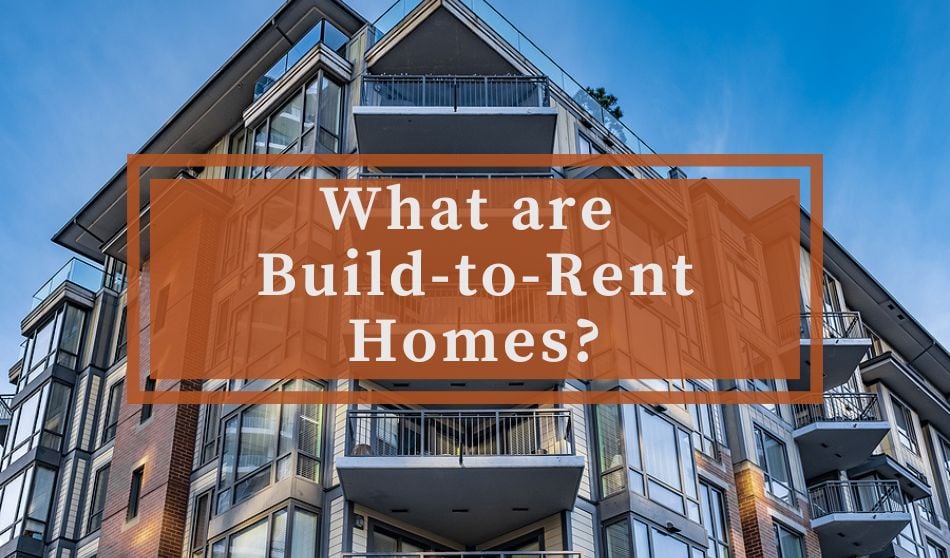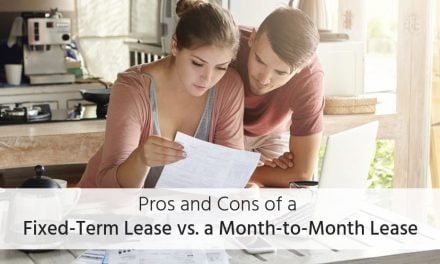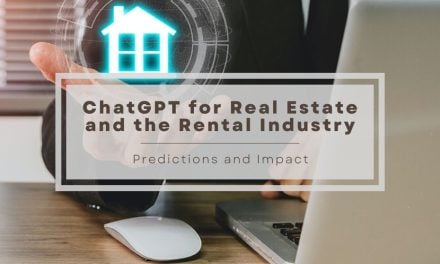
Build-to-Rent (BTR) homes are residential properties that are purpose-built for rental occupancy rather than individual ownership. For residents, Build-to-Rent homes address the current rental market needs for affordable, eco-friendly, community-focused living. There are pros and cons to investing in Build-to-Rent homes; investors should be sure they understand the benefits and drawbacks before committing.
While some people are ready for homeownership, there are others who are struggling to save up for it. Thankfully however, for those who can’t afford it yet, there’s an appealing alternative: Built-to-Rent homes. For tenants, this new real estate trend offers a flexible and cost-effective housing solution. And for investors, it’s a way to diversify their portfolios and discover new opportunities in a saturated and competitive market.
If you’re considering Build-to-Rent homes as either an investor or renter, it’s crucial to understand exactly what they are, the different types, and the pros and cons of it.
Defining Build-to-Rent (BTR) Homes
As the name suggests, Build-to-Rent homes are residential properties that are purpose-built for rental occupancy rather than for individual ownership. Unlike traditional real estate models where developers construct homes for sale, in the BTR model, developers create homes or even entire communities of homes, with the intention of renting out every unit to tenants looking to rent long-term. More often than not, this results in a professionally managed, cohesive living environment designed to meet the needs and preferences of modern tenants.
Why Build-to-Rent Homes Are Becoming More and More Popular
The surge in popularity of build-to-rent homes is due to their ability to address critical shifts in housing preferences and financial realities. In an era marked by evolving lifestyles and economic uncertainties, many individuals are opting for the flexibility and reduced financial commitment that renting offers.
Build-to-Rent communities and developments often boast prime locations, ensuring convenient access to urban centers and essential services. The BTR model also appeals to investors seeking stable, long-term income streams in an otherwise competitive and fluctuating real estate market.
The Different Types of Build-to-Rent (BTR) Homes
Because build-to-rent homes come in various architectural styles, it gives tenants the flexibility to choose from a home that best suits their needs. BTR homes can mimic the traditional suburban family home or feature a diverse range of building designs, which include:
Horizontal Apartments
These refer to tightly clustered, professionally managed, freestanding single-family residences, often numbering in the hundreds.
Duplexes
This is a term for two living units attached to one another.
Row Homes
Row homes are constructed side by side, sharing a common wall.
Small Lot Homes
These are individual homes built in close proximity. While a standard home lot usually encompasses around 5,000 total square feet, including the yard, a small home lot can be as compact as 600 square feet.
Key Features of Build-to-Rent Homes
Professional Management
In contrast to conventional rental properties, which individual landlords may manage, BTR homes are typically overseen by professional management companies. With a management company heading the property, tenants have access to reliable maintenance, efficient issue resolution, and a seamless living experience.
Amenities and Services
Build-to-Rent communities often come replete with a wide range of amenities and services, which can include fitness centers, communal spaces, co-working areas, pet-friendly facilities, swimming pools, and even concierge services. Each of these offerings are tailored to cater to the lifestyle preferences of today’s discerning renters.
Flexibility
Because Build-to-Rent homes offer flexible lease terms, it allows tenants to choose from various rental options that suit their specific needs. For individuals or families who may not be ready or interested in committing to long-term ownership, this flexibility is especially appealing.
Quality and Design
Developers of BTR communities place a premium on the quality of construction and design. Homes that are Built-to-Rent are often built with modern, energy-efficient materials and feature contemporary design elements. This extra attention to detail ensures a higher standard of living for the occupants.
Community Integration
BTR homes are often part of larger mixed-use developments, which can include retail spaces, parks, and other community amenities. This integration fosters a sense of community, providing residents with a well-rounded living experience.
Five Benefits of Build-to-Rent Homes
- Affordability and Accessibility: An increasing number of individuals, ranging from young professionals to retirees and families of varying sizes, are choosing to rent rather than buy. But instead of gravitating towards apartments or condos, many are now opting for single-family homes for rent. By offering professionally managed rental options in desirable locations, BTR homes can provide more accessible housing solutions for a wide range of demographics.
- Reduced Financial Barriers: For many individuals or families, the financial burden of purchasing a home can be daunting. BTR homes remove this obstacle, enabling individuals to enjoy a high-quality living experience without the hefty upfront costs associated with home ownership.
- Maintenance and Hassle-Free Living: Most tenants seek out a hassle-free living experience. Having a professional property management company handle maintenance, repairs, and other property-related issues promptly and efficiently is a huge plus for residents. It gives them the opportunity to live their daily lives without the stressors of upkeep and unexpected repairs. It also gives tenants a huge relief to know that they aren’t responsible for fronting the costs of any ongoing maintenance.
- Community and Social Benefits: The integrated community aspect of BTR developments fosters a sense of belonging and social interaction among residents. Shared spaces and amenities create opportunities for neighbors to connect, paving the way for a stronger sense of community compared to more traditional rental settings.
- Environmental Sustainability: Many Build-to-Rent developments are designed with sustainability in mind. From energy-efficient construction materials to renewable energy sources, these communities often incorporate eco-friendly practices that contribute to a more sustainable future.
Drawbacks of Build-to-Rent Homes
While Build-to-Rent homes offer numerous advantages, it’s important to consider its potential downsides as well. Here are some of the disadvantages associated with this housing model:
Limited Equity and Long-term Wealth Building
Unlike traditional homeownership, where property appreciation can lead to long-term wealth accumulation, tenants in Build-to-Rent homes do not have the opportunity to build equity.
Rent Escalation
Since rent in Build-to-Rent communities may be subject to periodic increases, it can lead to higher housing costs over time. And for tenants looking for price stability, this may be a concern for long-term financial planning. In addition, while initial upfront costs may be lower compared to buying a home, monthly rent payments can add up over time and may exceed the costs associated with a mortgage.
Limited Control over Property Modifications
Tenants in Build-to-Rent communities may have restrictions on making significant modifications or improvements to their homes, because these properties are typically managed by professional companies. It’s also not uncommon for tenants to have limited control over the design and layout of their living spaces, as these properties are typically built to a standardized design.
Dependence on Property Management
The quality of the living experience in a Build-to-Rent community is heavily dependent on the effectiveness of the property management company. In some cases, issues with management could lead to a less satisfactory living experience.
Potential for Overbuilding
If the market becomes saturated with Build-to-Rent properties, there could be an oversupply, potentially leading to increased competition and potential challenges for property owners.
Potential for Displacement
In some cases, residents of a Build-to-Rent community may face the risk of displacement if the property owner decides to sell or repurpose the development.
The Impact on the Real Estate Market
There’s no doubt about it. The rise of Build-to-Rent homes is reshaping the real estate market in profound ways. It introduces a new dynamic that challenges traditional models of property development. As a result, developers and investors are increasingly recognizing the potential of BTR as a viable and sustainable investment strategy.
Final Thoughts
Build-to-Rent homes represent a significant shift in how we approach housing. By focusing on professionally managed, purpose-built rental communities, this model offers a host of benefits for both developers and tenants. As this trend continues to gain momentum, it’s likely to influence how we think about and experience residential living for years to come.







How does on get involved in the BTR industry? As an investor or as a principle?
Can you share more details or links to these communities?